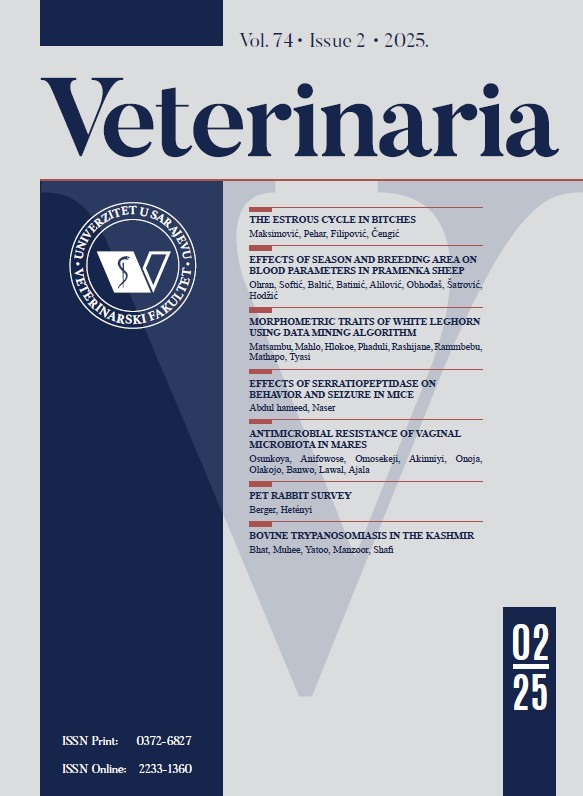Enteropathogens associated with neonatal calves diarrhea in Tiaret area (Western Algeria)
Keywords:
Neonatal calves diarrhea, E. coli, fimbriae, afimbrial adhesion, Cryptosporidium spp.Abstract
The aims of this study were to assess the prevalence of rotavirus, coronavirus, Cryptosporidium spp. and E. coli strains associated with neonatal diarrhea in one-month-old calves. Fifty fecal samples collected from diarrheic calves were examined bacteriologically for E. coli, and by Sandwich ELISA screening for rotavirus, coronavirus, Cryptosporidium spp. and E. coli F5 strain. Cryptosporidium spp. was the dominant enteropathogen followed by E. coli F5. The E. coli fimbrial adhesin (F5, F17, F41) and the afimbrial adhesin CS31A were determined by slide agglutination using specific antiserum, and the standardized disc diffusion assay was used to estimate the antimicrobial sensitivity. Bacterial culture identified E. coli in 62% of the samples. The fimbriae F17 were detected in 29% followed by fimbriae F5 (26%), and afimbrial adhesin CS31A (9.68%) in E. coli isolates. 68.75% of E. coli. was shown to be multidrug resistant. The present study demonstrates a high multidrug-resistant strains of E. coli isolated from the neonatal calves’ diarrhea, and the clearly higher frequency of Cryptosporidium spp. in comparison with the other enteropathogens.








